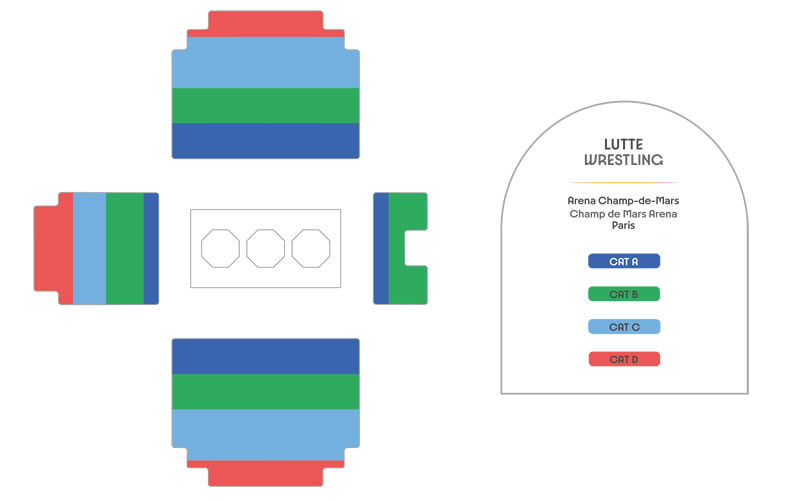WRE07 M/W - 1/8 finals, 1/4 finals, repechage - Summer Olympics - Paris Olympic 2024 Olympic Wrestling Tickets

Champ De Mars Arena - Wrestling
Olympic Wrestling
Olympic Wrestling is one of the most historic and enduring sports in the Olympic Games, showcasing the raw power, skill, and determination of athletes from around the world. As a test of strength, technique, and strategy, wrestling demands not only physical prowess but also mental toughness and precise execution.
There are two main styles of wrestling contested in the Olympics: Greco-Roman and freestyle. In Greco-Roman wrestling, athletes are restricted to using only their upper bodies and arms to attack or defend—holds below the waist are not allowed. This style emphasizes throws, lifts, and upper body control. In freestyle wrestling, athletes may use both their upper and lower bodies to execute holds, allowing for a wider variety of techniques and takedowns.
Wrestling matches are contested between two athletes on a circular mat, typically over two periods with a short break in between. The goal is to score points through maneuvers such as takedowns, reversals, exposures (turning an opponent’s back to the mat), and escapes. A match can also end instantly if a wrestler achieves a pin, holding both of the opponent’s shoulders to the mat.
Olympic wrestling features various weight categories for men and women to ensure fair competition. Each match is a battle of endurance, technique, and strategy, as wrestlers must adapt to their opponent's style and make split-second decisions. Conditioning and mental resilience are critical, as even the smallest mistake can be the difference between victory and defeat.
Wrestling has deep roots in many cultures, and the Olympic stage brings together athletes from diverse nations. Countries such as Russia, the United States, Iran, Turkey, Japan, and Cuba have historically excelled in the sport. The competition is fierce, and rivalries are intense, contributing to some of the most memorable moments in Olympic history. Training for wrestling involves rigorous strength and cardio work, technical drills, sparring, and mental preparation. Wrestlers must maintain strict weight control and be prepared to perform at their peak with precision and aggression.
Overall, Olympic Wrestling is a powerful and respectful sport that honors centuries of tradition while demonstrating the height of athletic ability. It represents the Olympic values of excellence, respect, and perseverance, making it a compelling and admired event in the Summer Games.
